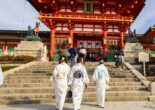Squeezed between its more famous neighbors of Akihabara and Ueno, Okachimachi has a life of its own. This includes the most famous shopping street in Japan and some of the best Indian restaurants throughout the country. Read on to find out more.
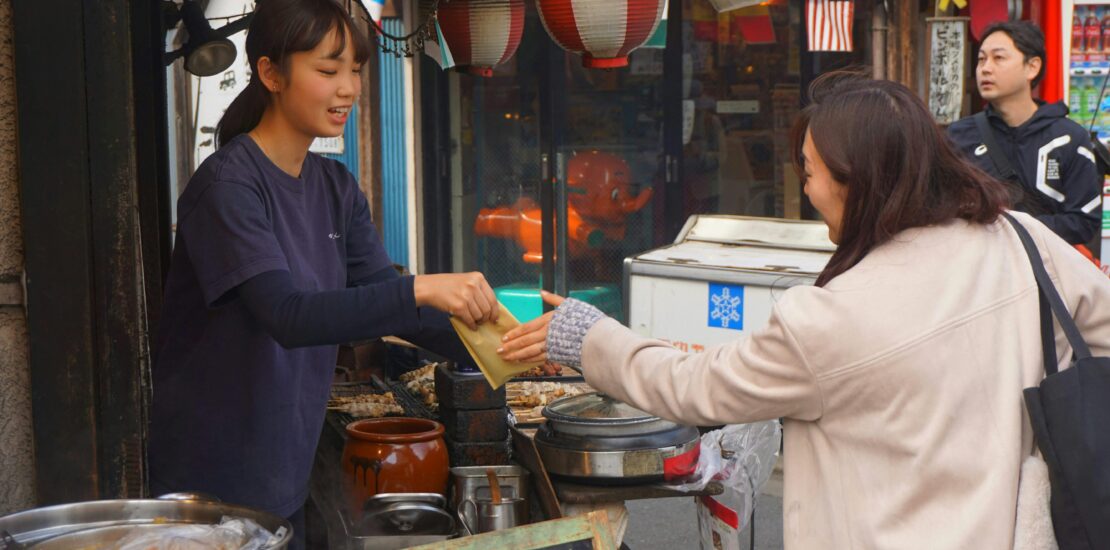
Okachimachi: Tokyo’s Overlooked Gem Between Akihabara and Ueno
Okachimachi may feel like an intermediary halt on the Yamanote line between Akihabara and Ueno. But this station has a life of its own, a life that includes some of the most iconic shopping and eating in Japan.
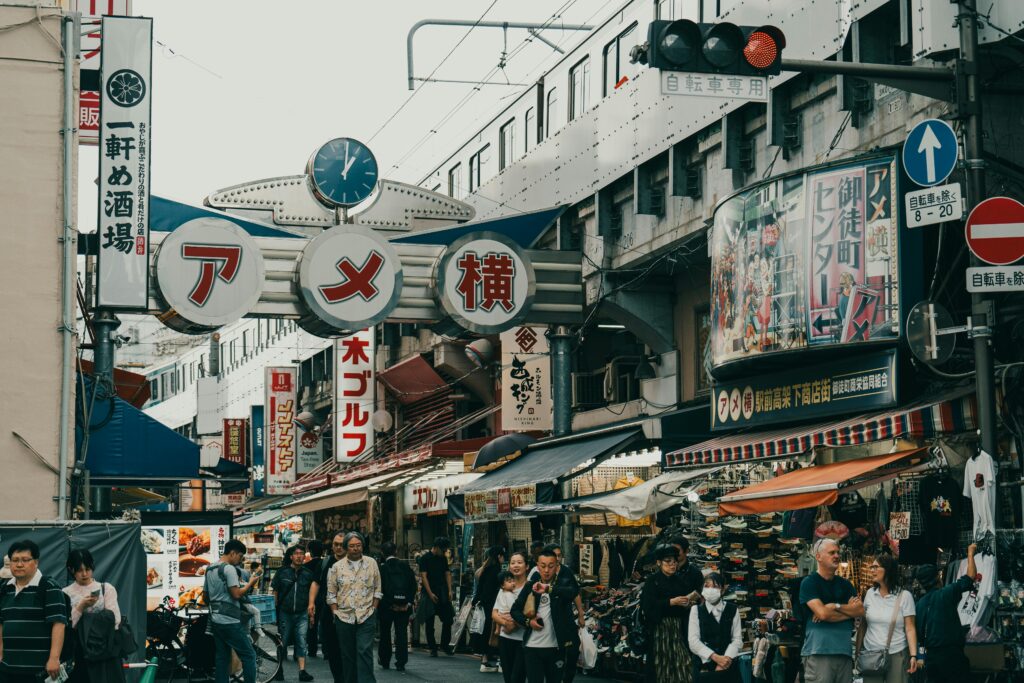
New Year’s Rush: The Role of Okachimachi in Japanese Holiday Food Traditions
Every New Year’s Eve, which is the day before the actual New Year’s holiday in the Japanese calendar, the TV morning shows will go to Okachimachi and bargain for fresh fish for the osetchiryouri, the traditional dishes served at the New Year’s family dinner. Most people order a bento box with the many different dishes you are supposed to eat on the day, and which will bring luck for the coming year. The marketing of these bento (with especially costly and rare ingredients) starts already in October, sometimes even earlier.
The Hunt for Fresh Sashimi and Real Bargains in Okachimachi
But one dish which is hard to buy fresh in October if you intend to eat it at the end of December is sashimi (and other types of really fresh seafood, like cockles and salmon roe). This is what the TV crews will go to Ameya-Yokocho to find. And another thing they will be looking for there is something that is even harder to find in Japan: A bargain.
Not that Japanese shoppers do not love bargains. To strike a bargain is what many Japanese grannies live for, and many of the traditional department stores that dot the Japanese cityscape are pretty dull affairs, except when there is a sale. Then, you can have riots when there are ”stuff all you can in a small bag” sales for clothes, especially panties and socks.
Takeya: A Staple of the Okachimachi Shopping and Gold District
If it is bargains you are looking for, the Takeya discount store is for you. Even though they have let a 100-yen store move in on the top floor, this is still one of the best places in Tokyo to find cheap goods, usually with higher quality than the corresponding offering in Don Quijote. Confusingly, the store is split up in several buildings, so make sure to go to the right one. If you are looking for a place to buy souvenirs for friends and family (especially edible souvenirs), this is it.
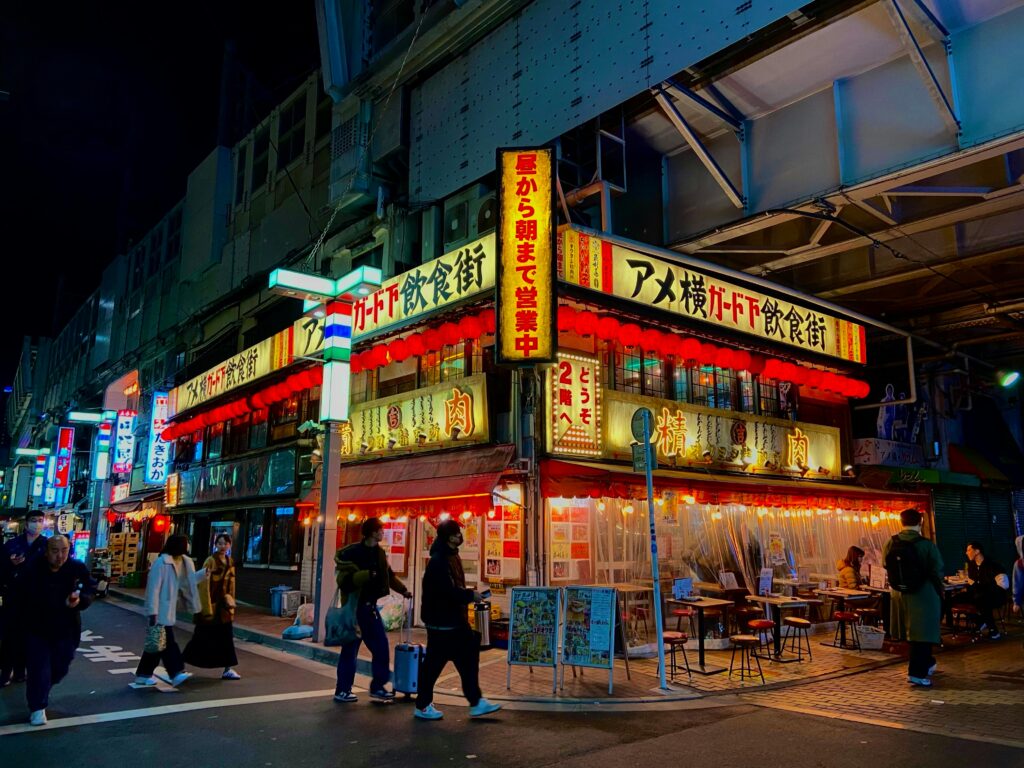
How Ameyokocho Transformed into a Cultural Marketplace
On Ameyokocho, there is always a sale going on, even though the Japanese grocery stores and fishmongers that used to line this street when it was a bargain seekers’ paradise are long gone, replaced by small restaurants, clothing shops, and markets selling ethnic (especially Chinese) foods. Behind the stores facing the street, there are several floors of shops hidden in the buildings behind; they sell ethnic foods from all over the world, and the browsing of the different smells, textures, and sights is an experience in itself. The only stores conspicuously missing are Western food stores, mostly since American and European foods are so easily accessible (Costco, the American food discount chain, is extremely popular in Japan).
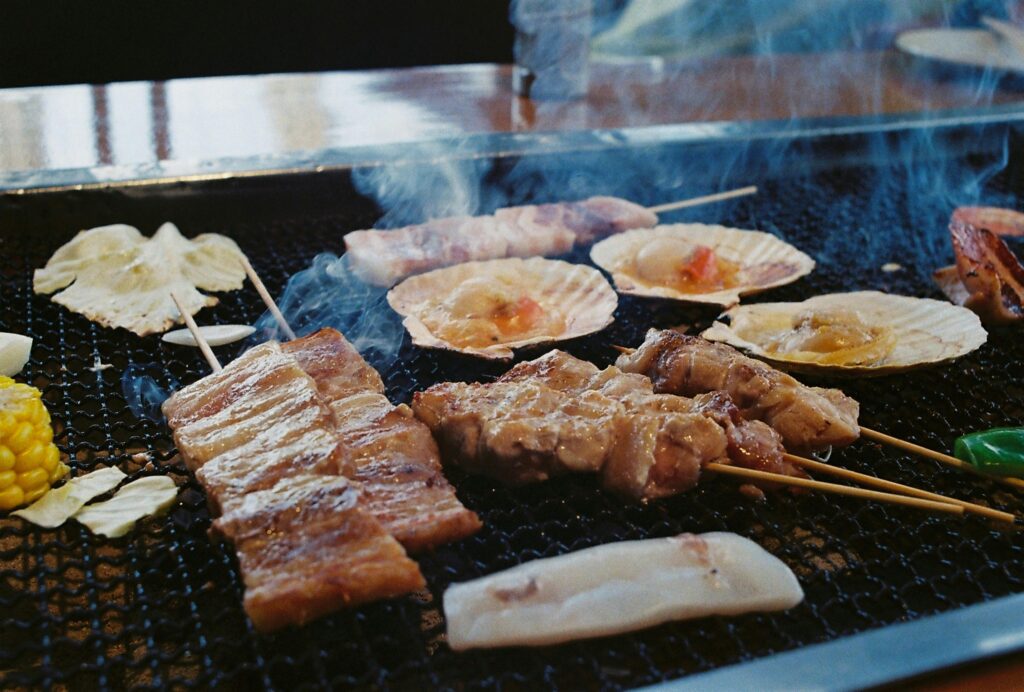
Street Food Culture at Ameyokocho
Ameyokocho is actually less a shopping street than a restaurant district, with restaurants selling traditional fare competing with Korean and Chinese-style restaurants. But all the restaurants have one thing in common: They serve food that is easy to eat while walking.
In Japan, eating while not sitting down is seen as uncouth and rude, as long as it does not happen in well-defined enclaves. Chinatown in Yokohama is one such. Ameyokocho has become another. If you buy finger food to eat on the go, remember to be extra careful while walking and eating so you do not spill or smear on someone else.
Indian Curry Enclave Meets the Jewelry Trade in Okachimachi
One of the biggest ethnic enclaves in Tokyo is located in the opposite direction from Ameyokocho, to the southwest of Okachimachi Station. This is an Indian enclave, but the shops and restaurants are not as conspicuous as in many other areas of Tokyo with ethnic enclaves, because at the same time as this is the Indian enclave (there is even a Hindu temple), this is the jewellery district.
The reason there is a strong Indian presence in the Tokyo jewelry district is that they did not come to sell — they came to buy. In India, jewellery, especially gold, is a common dowry and means of saving that can not be mismanaged by the banks. And Japan has a lot of gold. Not by virtue of mining, although the gold of northern Japan was a strong driver behind the first shogunate of Minamoto no Yorimoto in the 12th century, when the northern branch of the Fujiwara family (still the Japanese Imperial family) was on the verge of using the mineral wealth of their home provinces to establish a kingdom of their own in what is now the Tohoku region. The Chūson-ji in the Hiraizumi temple complex in Iwate, covered entirely in gold leaf, is a sign of this.
Selling the Mineral Wealth: A Quiet Economic Engine
Japan has considerable mineral wealth, and in particular, silver was plentiful during the 15th and 16th centuries, so plentiful that Portuguese traders exploited the difference in exchange rates to ship gold to Japan, which was paid for in more silver than elsewhere.
That Indian merchants have found Japan to be a great source of gold does not have to do with the exchange rate with silver, but rather with the yen. A cheap yen means intrinsically lower prices inside Japan than outside, although the prices of gold and other jewelry tend to follow the world markets.
However, there is another factor that makes Japan a source of mineral wealth, and that is the ageing population.
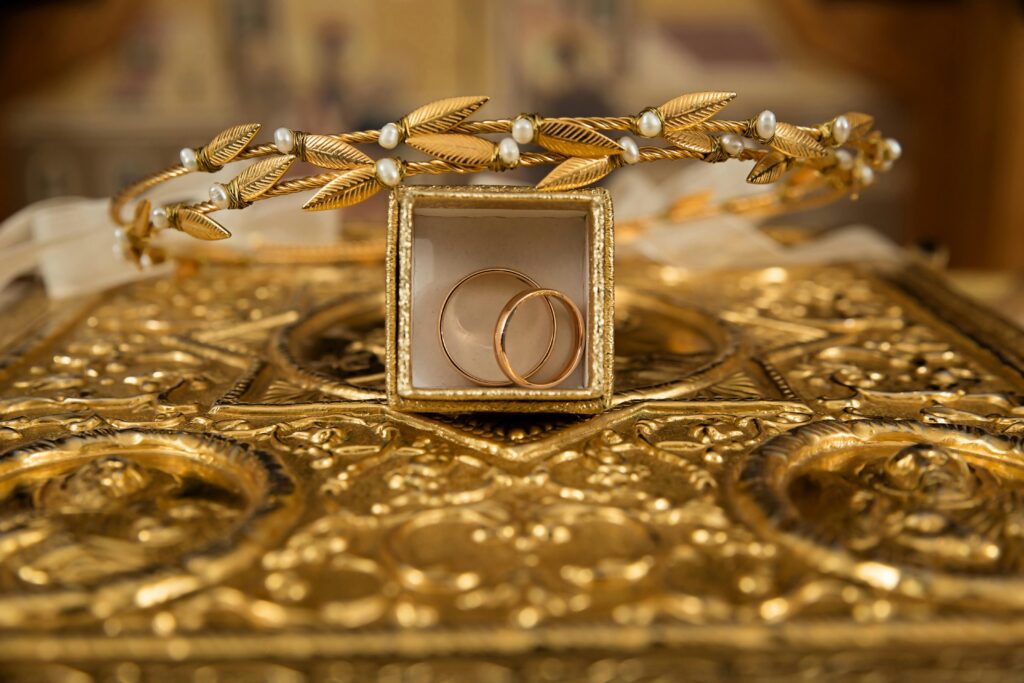
The Bubble-Era Legacy: Hidden Gold in Japanese Homes
There is a lot of gold and jewellery stowed away in Japanese homes. The lowest-hanging fruits may already have been picked, but during the Bubble Years of the late 80s and early 90s, Japanese people used the cheap money not just for property, but also to buy antiques and jewellery. Today, those who were young during the Bubble Years have paid off their loans and have grandchildren, or at least one.
Like grandparents everywhere, they look for ways to spoil their grandkids. And as this coincides with their moving, often to much smaller condominiums, getting rid of clutter makes sense. Especially if you can make money from it. In this case, by selling it to India.
Stay tuned for more exciting content like this! Follow us on our social media platforms and check out our blog regularly to stay updated on the latest news, trends, and insider stories from Japan. Don’t miss out on future updates—sign up for our newsletter for exclusive content delivered straight to your inbox!
Related Articles
Warning: Undefined array key "sfsi_threadsIcon_order" in /home/veremosglobal/tokyoroomfinder.com/public_html/blog/wp-content/plugins/ultimate-social-media-icons/libs/controllers/sfsi_frontpopUp.php on line 165
Warning: Undefined array key "sfsi_blueskyIcon_order" in /home/veremosglobal/tokyoroomfinder.com/public_html/blog/wp-content/plugins/ultimate-social-media-icons/libs/controllers/sfsi_frontpopUp.php on line 170
Warning: Undefined array key "sfsi_bluesky_display" in /home/veremosglobal/tokyoroomfinder.com/public_html/blog/wp-content/plugins/ultimate-social-media-icons/libs/controllers/sfsi_frontpopUp.php on line 266

